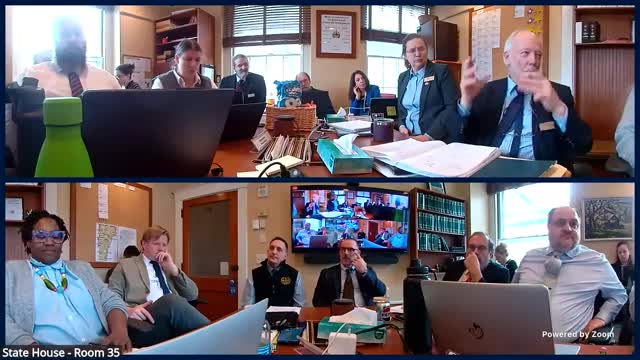Burlington CTE faces challenges with graduation requirements and student access
March 22, 2025 | Commerce & Economic Development, HOUSE OF REPRESENTATIVES, Committees, Legislative , Vermont
This article was created by AI summarizing key points discussed. AI makes mistakes, so for full details and context, please refer to the video of the full meeting. Please report any errors so we can fix them. Report an error »

Access to Career and Technical Education (CTE) programs in Vermont faces significant hurdles, as highlighted in a recent House Commerce meeting. Educators discussed the complexities of aligning high school graduation requirements with CTE offerings, revealing a system fraught with challenges.
One key issue is the differing graduation requirements across sending districts. Each high school mandates specific credits and classes, such as physical education and health, which complicates students' ability to participate in CTE programs. As one educator noted, "There is a lot of challenge involved in that," emphasizing the ongoing conversations with sending schools to help students balance their academic needs with CTE specialization.
The meeting underscored the reality that some students resort to summer classes or dual enrollment options to meet their graduation criteria while pursuing CTE. This workaround highlights the systemic dysfunction in the current tuition and scheduling systems, which many educators described as misaligned and inefficient.
Despite these challenges, there is a collaborative effort among educators to improve access to CTE. Recent changes in credit awards aim to better reflect the academic learning occurring in CTE programs, with sending districts showing receptiveness to these adjustments. However, concerns remain about how these credits appear on transcripts, particularly for students aiming for higher education.
The discussion concluded with a recognition of the need for ongoing partnership between CTE programs and sending schools to navigate these complexities. As educators continue to address these issues, the focus remains on ensuring that students can successfully transition into career pathways or college programs while meeting their graduation requirements.
One key issue is the differing graduation requirements across sending districts. Each high school mandates specific credits and classes, such as physical education and health, which complicates students' ability to participate in CTE programs. As one educator noted, "There is a lot of challenge involved in that," emphasizing the ongoing conversations with sending schools to help students balance their academic needs with CTE specialization.
The meeting underscored the reality that some students resort to summer classes or dual enrollment options to meet their graduation criteria while pursuing CTE. This workaround highlights the systemic dysfunction in the current tuition and scheduling systems, which many educators described as misaligned and inefficient.
Despite these challenges, there is a collaborative effort among educators to improve access to CTE. Recent changes in credit awards aim to better reflect the academic learning occurring in CTE programs, with sending districts showing receptiveness to these adjustments. However, concerns remain about how these credits appear on transcripts, particularly for students aiming for higher education.
The discussion concluded with a recognition of the need for ongoing partnership between CTE programs and sending schools to navigate these complexities. As educators continue to address these issues, the focus remains on ensuring that students can successfully transition into career pathways or college programs while meeting their graduation requirements.
View full meeting
This article is based on a recent meeting—watch the full video and explore the complete transcript for deeper insights into the discussion.
View full meeting